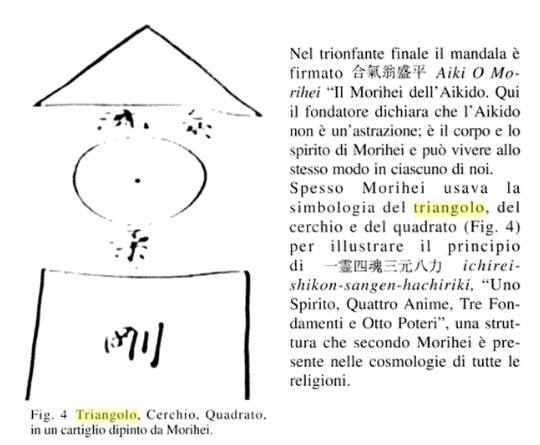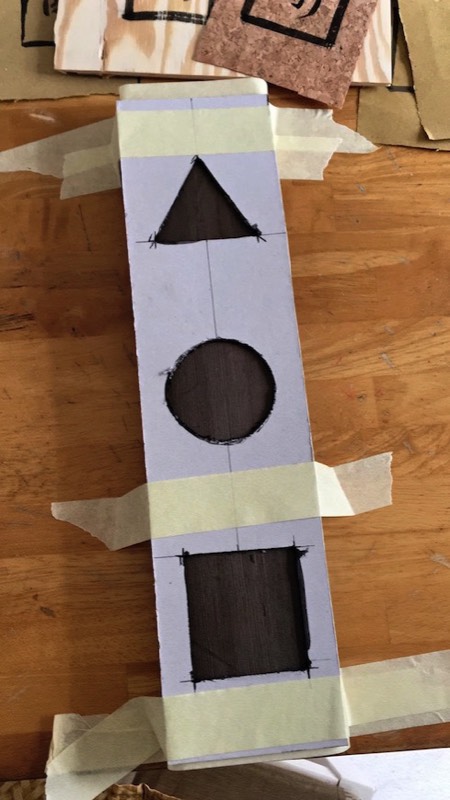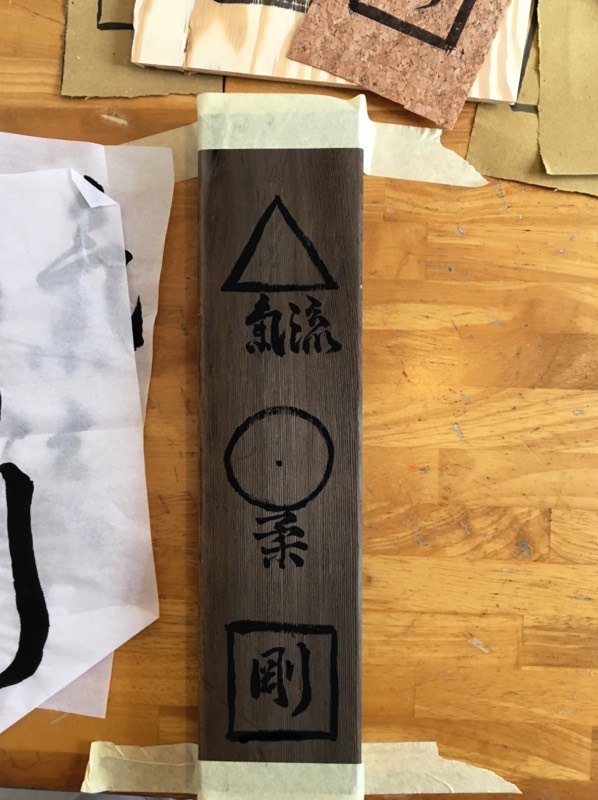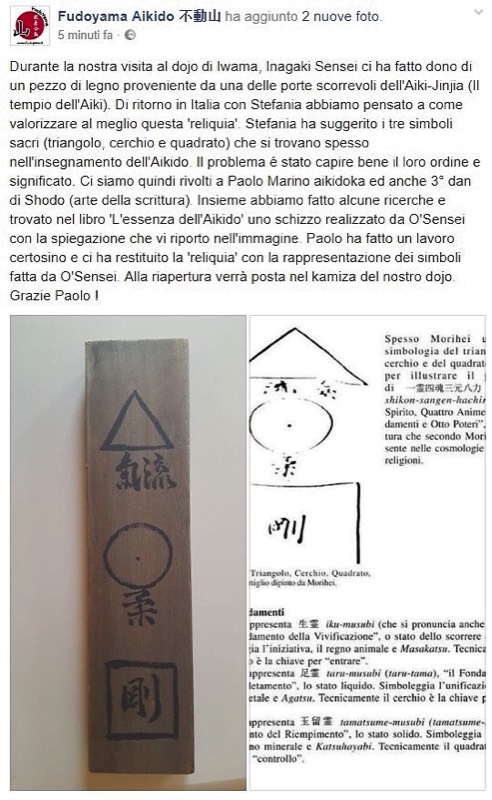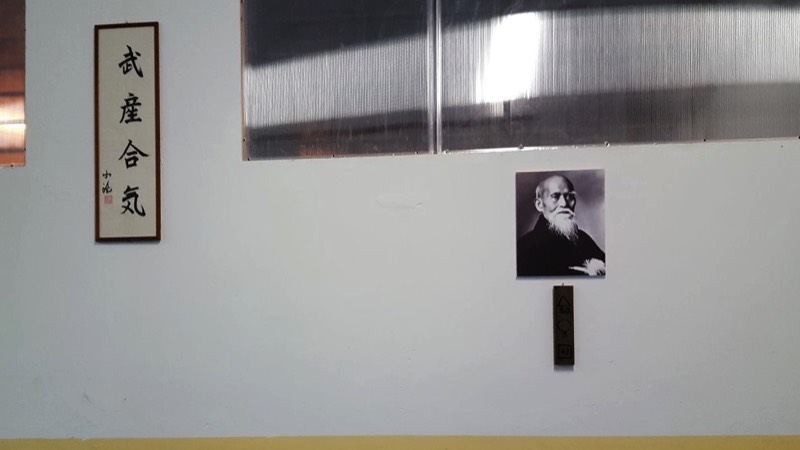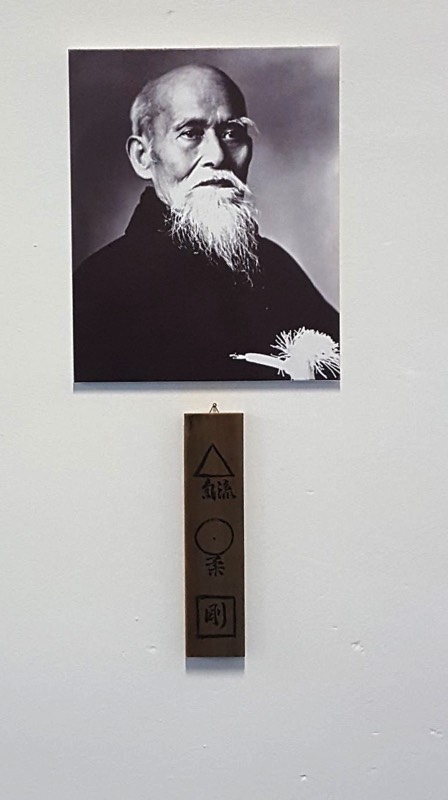As explained elsewhere, I have been practicing Aikido for 25 years in Italy before moving to Germany. I still practice here, but I also keep in contact with my old Dojo (I make a point to always schedule my trips back to Italy in a way to be able to go train there, if at all possible).
Despite the distance I am apparently also their go-to shodoka when the need arises.
July 2017: Fulvio contact me over Whatsapp with a peculiar request. He met Inagaki Sensei at the Iwama dojo and received an unusual gift from him: a small clapboard coming straight from the original Aiki Shrine in Iwama. I believe it was part of a panel from a sliding door, originally.
Fulvio wanted to have it decorated with some appropriate calligraphy so that it could then be put on display in his own dojo. I had already booked my next trip to Italy (on August) so I thought that this was feasible, even if I would stay there for only a couple of days.
Calligraphy, especially when performed on some unusual medium, is really a matter of 一期一会 you only have a chance, so you better prepare yourself to make it count.
Despite the distance I am apparently also their go-to shodoka when the need arises.
July 2017: Fulvio contact me over Whatsapp with a peculiar request. He met Inagaki Sensei at the Iwama dojo and received an unusual gift from him: a small clapboard coming straight from the original Aiki Shrine in Iwama. I believe it was part of a panel from a sliding door, originally.
Fulvio wanted to have it decorated with some appropriate calligraphy so that it could then be put on display in his own dojo. I had already booked my next trip to Italy (on August) so I thought that this was feasible, even if I would stay there for only a couple of days.
Calligraphy, especially when performed on some unusual medium, is really a matter of 一期一会 you only have a chance, so you better prepare yourself to make it count.
The first step, no matter what surface you will be asked to write on, is to agree with your "customer" what they want to have written.
The obvious choice was, of course "Aikido" - or maybe "Take Musu Ai Ki" but here Fulvio surprised me again by opting for… Triangle, Square, Circle.
If you google for exactly this, you will find a lot of links. In fact these three basic shapes have lots and lots of different interpretations. Some downright bizzarre.
Even if you restrict yourself to Aikido related concepts, you get a multitude of possible meanings…
The obvious choice was, of course "Aikido" - or maybe "Take Musu Ai Ki" but here Fulvio surprised me again by opting for… Triangle, Square, Circle.
If you google for exactly this, you will find a lot of links. In fact these three basic shapes have lots and lots of different interpretations. Some downright bizzarre.
Even if you restrict yourself to Aikido related concepts, you get a multitude of possible meanings…
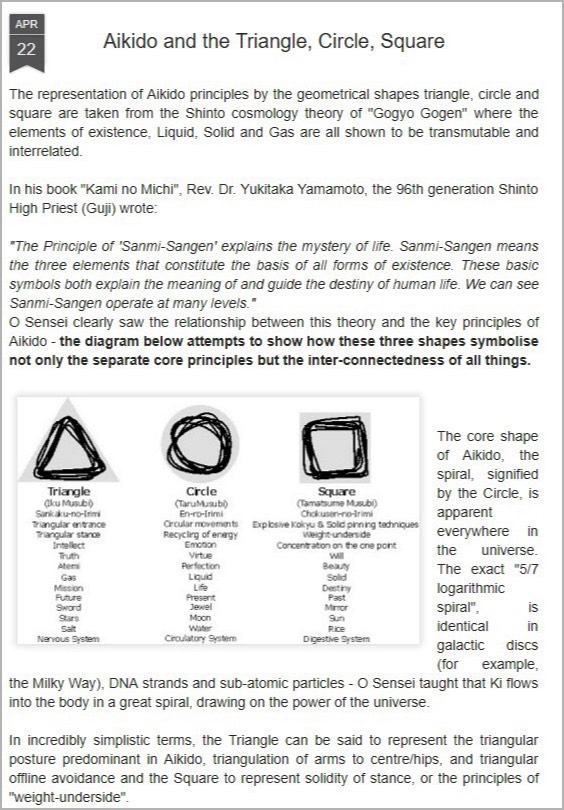
The concept itself is actually coming from Japanese Zen - and it is usually traced back to Sengai Gibon. It is often cited by Aikido teachers, too, and it has been established that Ueshiba himself mentioned it frequently… but as often it is the case it is not really easy to get some authoritative source to find out exactly what Ueshiba was trying to describe when referring to this.
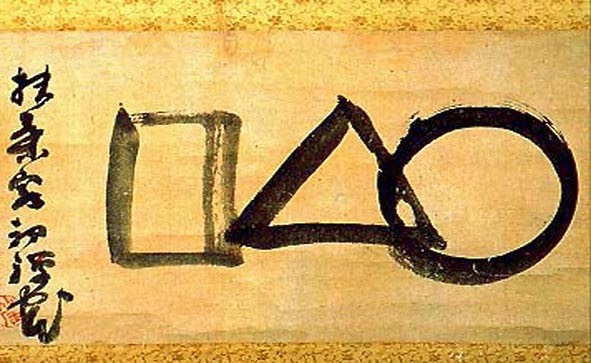
"My play with brush and ink is not calligraphy nor painting; yet unknowing people mistakenly think: this is calligraphy, this is painting." — Sengai Gibon
After a couple of days of research, I finally managed to find some more concrete example of this in Ueshiba's notes
As usual I am indebted to my Shodo teacher in Berlin - in this case for helping me decipher the kanji (barely visible in the sketch to the left) and of course providing examples of how to write these:
🔼: 気流 i.e. Ki(no)Nagare - usually translated as "fluent movement"
⏺: 柔 (also used in Judo and Jujitsu) is supplenness, flexibility.
⏹: 剛 Strength, Stability
🔼: 気流 i.e. Ki(no)Nagare - usually translated as "fluent movement"
⏺: 柔 (also used in Judo and Jujitsu) is supplenness, flexibility.
⏹: 剛 Strength, Stability
Armed with Fulvio's approval, and the actual measurement for the wood piece, I started practicing with paper models
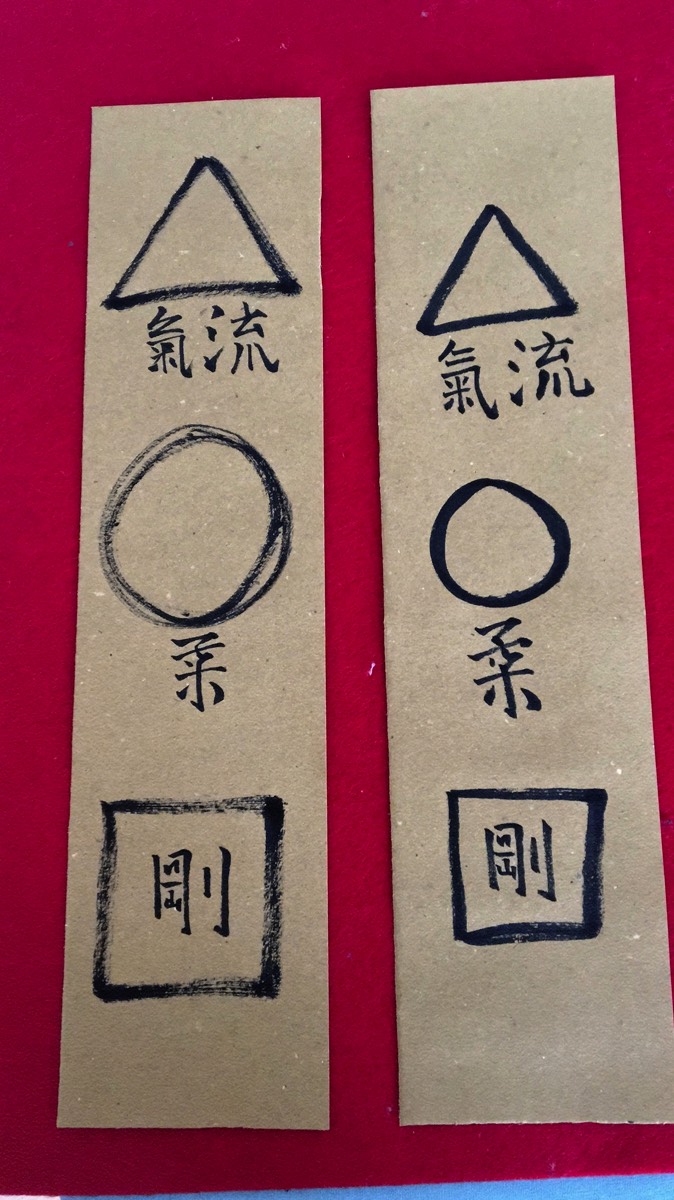
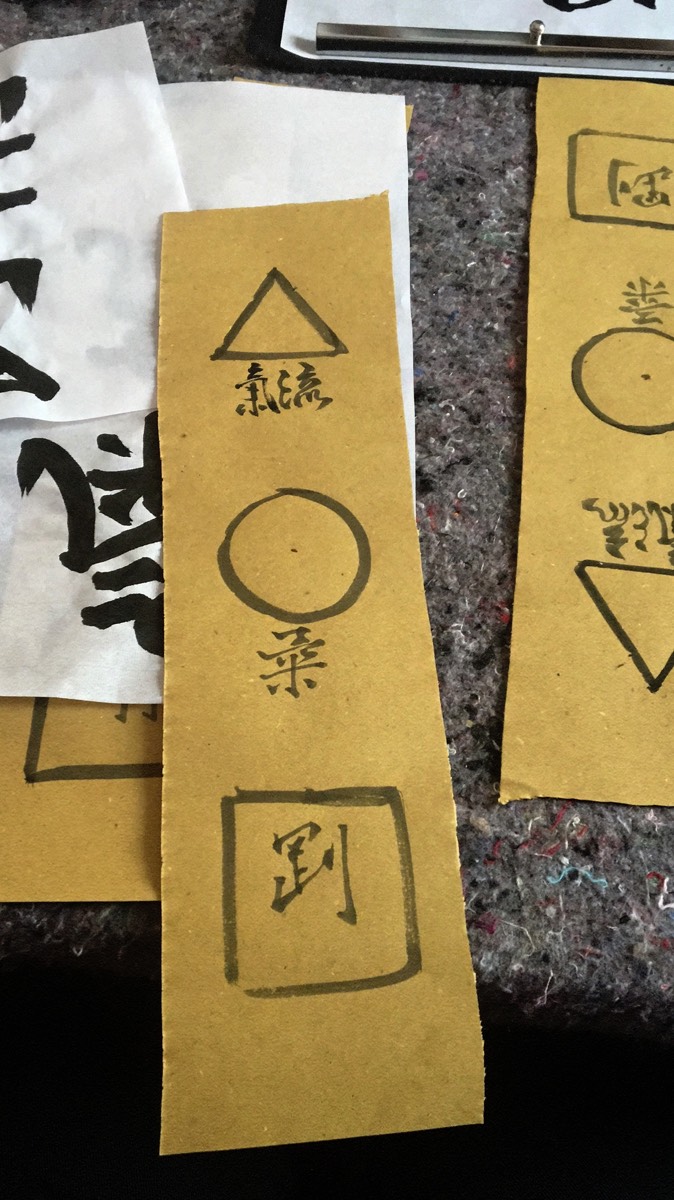
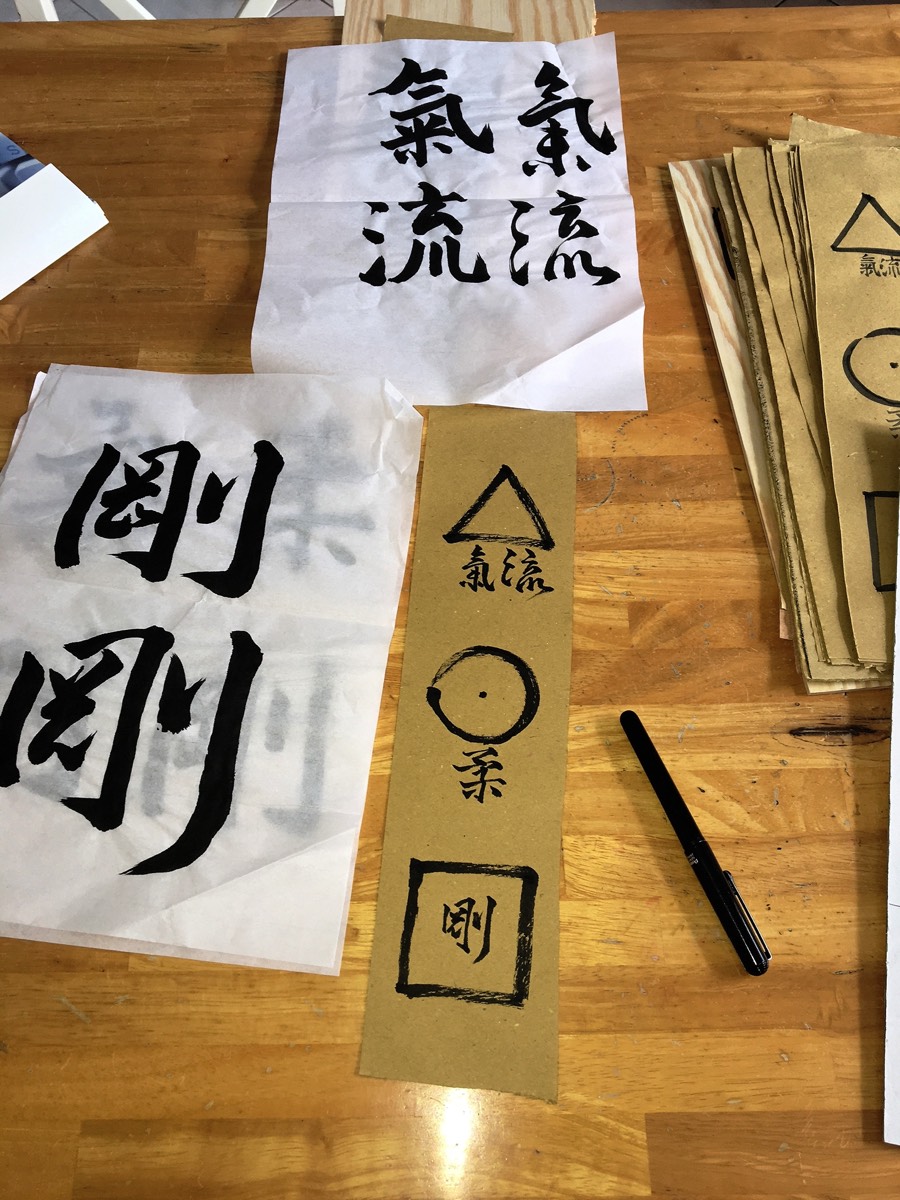
I also tried some other materials to get an idea of how the ink would behave on wood, and I also experimented with different colours (traditionally you always use black pigments, but the actual wood piece was pretty dark, so I wanted to see if a different pigment would work better… in the end we both agreed that black would be the best choice).
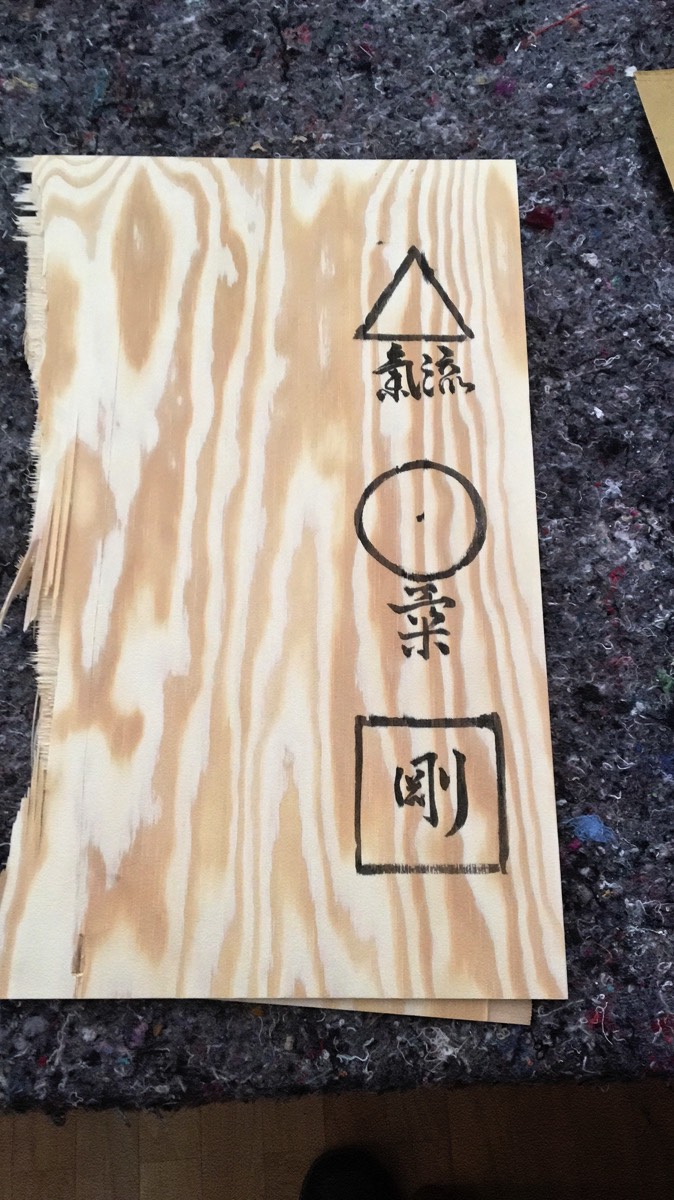
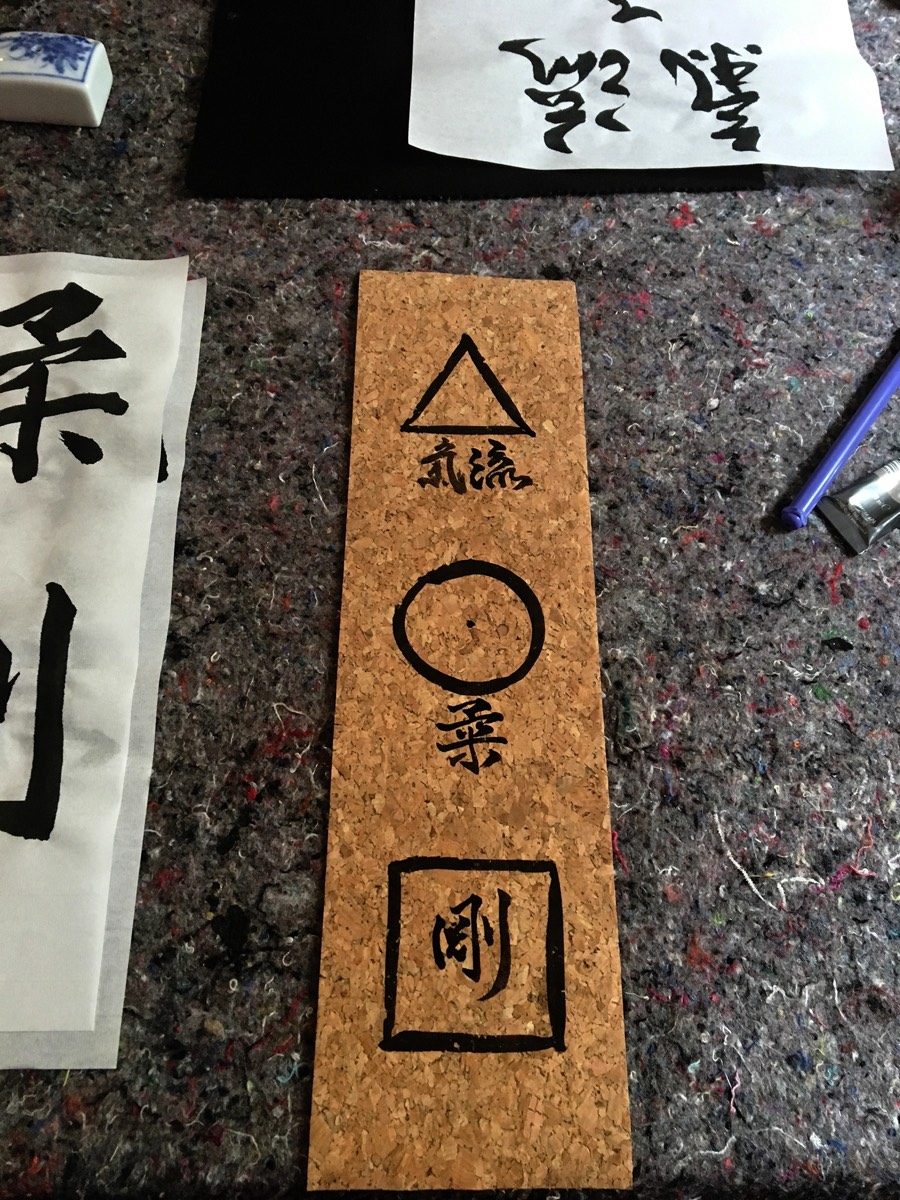
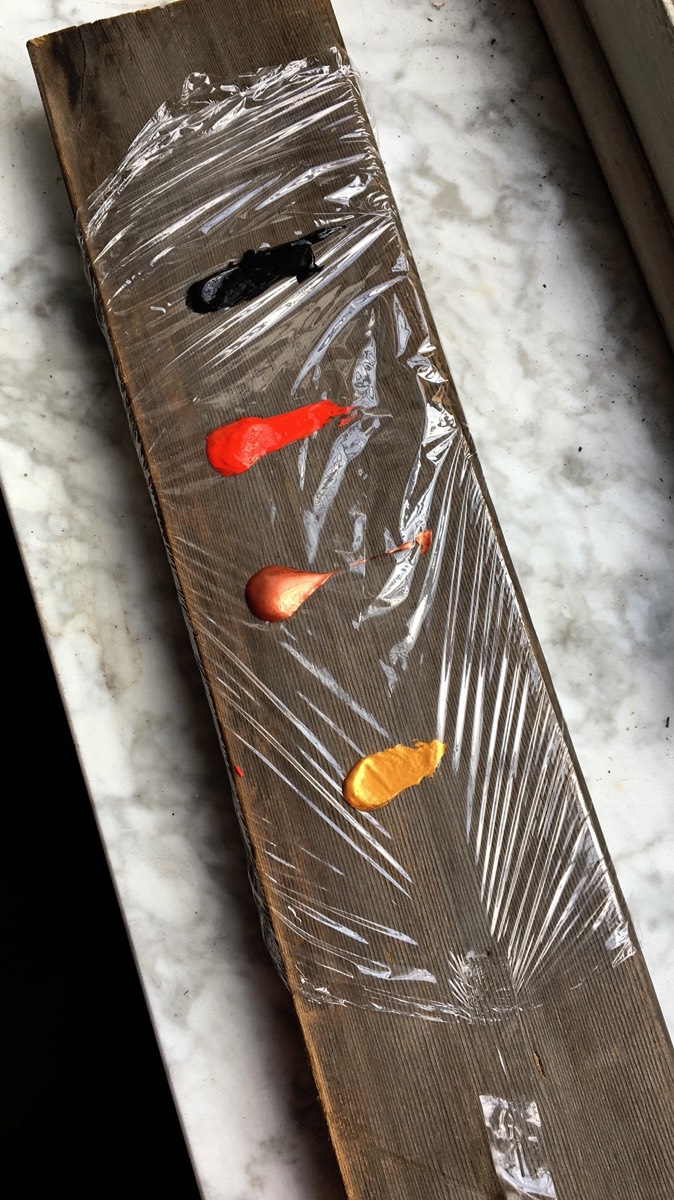
I had also decided beforehand that I would just use a template for the basic shapes, and that the actual "artistic deliverable" would be the Kanjis.
I bought some heavy cardboard and cut it so that it had the same size of the clapboard, and then cut off the shapes, being careful to space them out appropriately.
By using a template I would just create the shapes first, let them dry off for a bit then remove the cardboard and write the characters directly on the wood, using the same layout that Ueshiba made in his sketch: i.e. writing the kanji under the triangle and circle, but putting the Strength characters inside the square.
I bought some heavy cardboard and cut it so that it had the same size of the clapboard, and then cut off the shapes, being careful to space them out appropriately.
By using a template I would just create the shapes first, let them dry off for a bit then remove the cardboard and write the characters directly on the wood, using the same layout that Ueshiba made in his sketch: i.e. writing the kanji under the triangle and circle, but putting the Strength characters inside the square.
And… this is it!
As you can see the surface of the wood was really rough - I was a bit worried that the brush would "open" or that the ink (actually water based acrylic, in this case) would spread unevenly.
I managed to keep this under control though, by using a slightly denser mix and being really careful when writing.
Fulvio was pretty happy with the result: below you can see the current home of Inagaki's gift (click on the images below for a full view)
